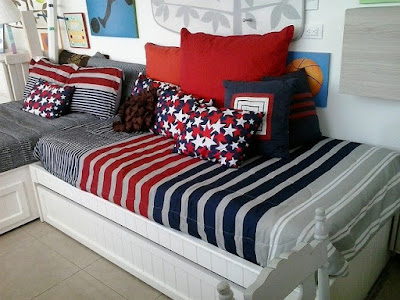Safety issues to consider when buying mattresses for your crib
Safety issues to consider when buying mattresses for your crib - Growing up children need a healthy night's sleep the most. A night's rest for children helps to ensure proper physical and mental development, as it is the time when their brain collects everything they have learned throughout the day. It's also when your physical body, including your bones, hormones, and biological makeup, is evolving. It is very important to ensure that they are resting and kept safe throughout the night if they are to grow properly. In many ways, the healthy development of your child starts with a healthy mattress. Here are some important things to consider when buying your baby crib:
Mattress types vary greatly in material, composition, stiffness, and even design style, all for good reason. One of the first things to remember when choosing a mattress for your child's bedroom is that not all mattresses are created equal. There are those that are specifically designed for back ailments or to help with other health issues the user may have, such as allergies or bed-wetting.
How to buy a mattress for a child?
Like adult mattresses, children's mattresses come in different configurations, each providing benefits for different types of sleepers. They usually come in spring, memory phones, latex foam, or cotton and wool varieties.
Organic mattresses are preferred for growing children, especially since traditional types of mattresses are known to have safety issues that can negatively impact users' health. For example, ordinary mattresses are treated with fire retardants and similar types of chemicals and treatments to ensure compliance with fire safety regulations. These chemicals can become toxic fumes over time, which can negatively affect the health of developing children. Allergens can also lurk inside certain types of mattresses, making them unsuitable for babies with very particular sensitivities.
What is the best mattress for a child
Babies also need proper lumbar support while they sleep, which helps keep the spine and bones balanced as they grow. A supportive mattress, such as an elastic foam mattress and a pocket spring mattress, can effectively reduce wobbling, discomfort and insomnia, allowing for a deeper sleep.
Synthetic mattresses are also likely to attract pests, mites, and bacteria, which can cause mild to severe irritation and allergic reactions. Mattresses made from organic materials generally do not cause allergies, stop allergy symptoms in their tracks, and ultimately help your child rest at night.
In addition to the choice of the mattress, the choice of the bed frame is also important, especially when it comes to air circulation through the crib. Air bed frames are a better option because they provide better airflow, which helps wick moisture from sweat, especially during warm seasons.